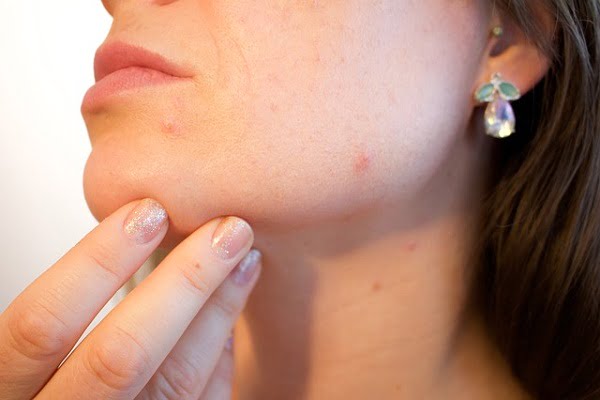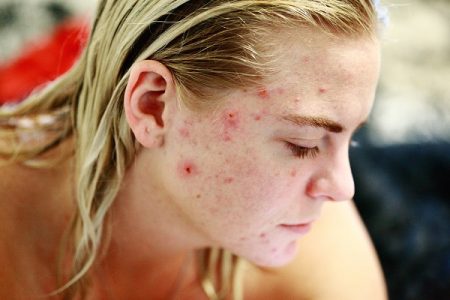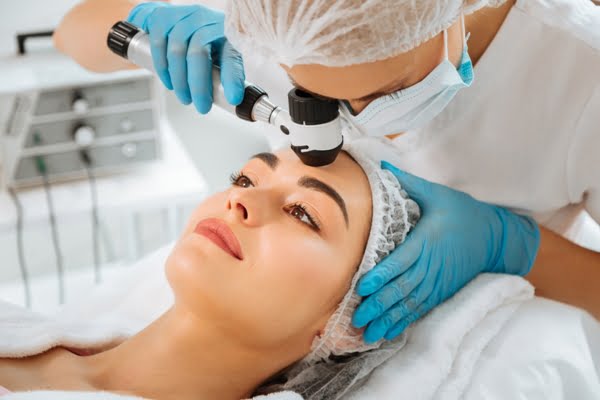Acne Treatment Using Laser Therapy
- Updated on: Jul 9, 2024
- 5 min Read
By
- Published on Oct 30, 2018

Acne and laser treatment
Acne can be quite scary and even when it is treated; it leaves behind ugly and visible scars on the face, which sometimes becomes even worse. Acne scars might be difficult to get rid of with home-made therapies and cosmetic products, however with laser treatment; you can have an all-clear skin and boost your beauty and self confidence.
Laser therapy is one of the fastest ways to deal with acne scars and hyper-pigmentation. It can also be beneficial for inflammatory acne. However, it’s not known to be particularly helpful for non-inflammatory acne.
It is believed that acne affects only teenagers. However, this is not true. Acne vulgaris can happen to anyone at anytime. It is a disease that occurs usually when our oil glands coagulate with oil, dirt, dead cells and bacteria resulting in inflammation of the skin which give rise to pimples, whiteheads, and blackheads. Read about causes of acne.
It is mainly caused due to bad skin hygiene and hormonal imbalance that can be activated by stress, depression, dietary issues, lifestyle habits etc. Prevention from acne attack may not be possible all the time but acne scars can be treated with laser treatment therapies in a safe and effective way.
Laser treatment reduces the visibility of scars. Focused light therapy is used to remove the outer layer of the skin’s surface and stimulate the production of new skin cells to nullify the affect caused by damaged skin cells. Laser treatment reduces the appearance of warts, skin wrinkles, age spots, and keloids.
How does laser skin therapy work?
Lasers produces intense beam of monochromatic light of narrow wavelength. Laser beam has no effect on certain substances while high-intensity beams can have drastic effects on certain other types of substances. Just one setting that might heat hemoglobin may have no effect on neighboring skin cells. Another setting can “melt” the melanin which may cause deep pigmentation on the skin. Still another setting might cause the tattoo ink to disappear. Dermatologists use lasers to destroy specific target areas at specific depths in the skin.
Primarily, the laser light in skin resurfacing is photothermal, as it heats up particular substances in the skin.
The process of using laser to remove scars in the skin is known as photothermolysis, which involves the breakdown of selected skin tissues. Continuous exposure to laser light destroys tissues surrounding the target location as the target tissues are heated.
More: Acne: Types, Causes, Symptoms, Diagnosis, Treatment
More: Images and infographics related to acne
Safety measures to consider before laser treatment of acne scars
- The doctor may numb the skin using topical anesthesia during this procedure. Sometimes, the doctor may administer sedatives to make you feel relaxed and comfortable during the entire therapy session.
- Laser treatment should only be performed by a certified dermatologist.
- Mild side effects of the procedure may appear on the skin which include such as pain, swelling, redness, and temporary itching. These effects usually disappear after few days of the treatment. If they do not improve or become worse, contact the doctor immediately.
Different types of laser treatments for acne scars
As there are different types of acne scars and skin types, there exist different types of laser treatments to deal with them. The most commonly used laser treatments are enlisted here:
Carbon dioxide laser treatment for acne scars
This is an effective way for treating acne scars. It is an evaporating resurfacing treatment for getting rid of acne scars. The method involves melting or vaporizing the damaged tissues of the skin layer by layer by protruding very tiny holes into the skin. This helps in collagen development in targeted area and smoothens out the acne scars. The idea is to stimulate healing so that the body can produce collagen by natural means. This laser therapy treats the affected part of the skin by leaving the surrounded area intact.
The recovery period may take up to 5 to 7 days but the procedure itself can be completed in just one session.
Fraxel laser treatment for acne scars
It is a non-ablative procedure and is one of the most modern procedures of all laser treatments for acne. It does not affect the outer layers of the skin. The method involves heating of the skin tissues in such a way that it clears burns out the old skin cells that are pigmented due to acne scar. Fraxel is milder, thus it is better for people with sensitive skin.
The recovery period may be up to 3 to 4 days; however the number sessions needed may be more as compared to carbon dioxide laser treatment method.
Fractional laser treatment for acne scars
Fractional carbon dioxide laser resurfacing uses a variety of beam sizes and densities to suit the requirement of a patient.
It is designed in such a manner that it targets only the scarred areas of the face while keeping the parts having normal skin, intact. The laser penetrates deep into the skin and hence is good for wide and deep scars.
In this therapy, the area affected by laser beams is lesser compared to other methods, and so the recovery time is quicker in this procedure.
Intense Pulsed Light (IPL) laser treatment for acne scars
This is suitable for dark or brown acne scars. It does not impact the skin texture and focuses on the scar instead and restores it back to the normal skin tone. One of the important features of this treatment is that it kills the acne-causing bacteria.
This therapy follows the principle of absorbance of light, as darker objects absorb more light. The laser light is so intense that before penetrating into the normal skin, it is absorbed by darker region of the skin that comprises scars. The absorbed heat breaks down the pigmented cells, thus eliminating the dark color.
V-Beam or Pulsed Dye Laser (PDL)
This treatment is suitable to get rid of redness developed due to acne scars. In this procedure, the concentrated laser beams target the enlarged blood vessels that are causing redness. The topmost layer of the skin has various nutrients and oxygen which get eroded due to the heat produced by laser beam. As a result, the dead skin cells are shed, and the skin gets an opportunity to regenerate cells in that region normally.
Fractionated Eribum or Pixel laser
This laser treatment is effective for brown skin. It usually takes 4 to 6 sessions spread across a month for a complete therapy. The laser beam creates pixel size holes on the skin encouraging the body to heal these harmless dots, which are nearly visible. During the healing process, the skin gets a chance to grow fresh, and eventually the skin becomes smooth and even toned.
Smooth-beam laser treatment for acne scars
This laser treatment is effective in reducing acne scarring and helps in stimulating the collagen development of the skin. It uses a dynamic cooling device that deep cools the target area of the skin using short blasts of cryogen spray. This protects the epidermis, topmost layer of the skin. Another laser beam is then used to target the upper dermis. The heat produced from the second laser boosts collagen development in the deeper layers of the skin and fills the acne scarring. It may take multiple sessions to heal the scars completely in this procedure for laser treatment for acne.
Laser for acne scars removal: Advantages and Disadvantages
Laser treatment for acne scars is non-invasive and usually ensures positive results. However, there are certain risks involved in this treatment method. Before you go for a laser treatment, look at its pros and cons. The benefits and side effects that are commonly observed are listed here:
Advantages of lasers for acne scars removal
- There is no surgery required at all.
- It is painless as it does not ruthlessly strip off the top layer of the skin using surgical instruments.
- The risk of infections is almost negligible as there is no cutting involved and hardly any bleeding occurs in laser treatments.
- Laser treatments are chemical free so there is no risk of harmful reactions on the skin.
- The recovery time is short as there are no cuts and scars as such; the face gets back to normal within a short period of time.
Disadvantages of lasers for acne scars removal
- Ablative lasers have some complications and side effects, including short-term effects like fungal and bacterial infections, and long-term effects like hyper-pigmentation. Overtreatment of a particular area with CO2 laser therapy can cause scarring.
- Laser treatment is expensive: Although the cost varies from place to place, but it can be costly.
- Skin may look red during the recovery time. Although the laser doesn’t burn the skin or peel it, the exposed new layers of the skin will remain sensitive to other biotic and abiotic factors.











